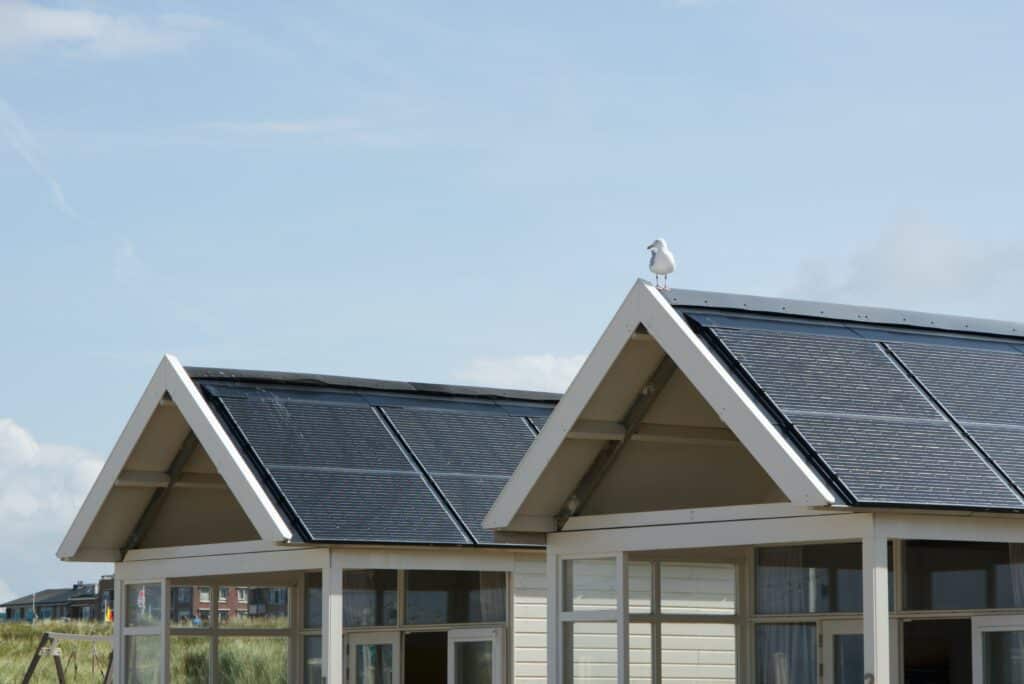The time for energy communities has come, but countries must address the obstacles hindering their development
Highlights from the FSR Talk: “Can energy communities contribute to the energy transition? And to solving the energy crisis?”
Can energy communities contribute to the energy transition and help with the current energy crisis? On 19 October, FSR Talk hosted Sabine Lӧbbe, Fereidoon Sioshansi and David Robinson, editors of the book “Energy Communities: Customer-Centred, Market-Driven, Welfare-Enhancing?”, to discuss the benefits energy communities can provide to consumers and to the wider society in the short and longer term. In this article, we discuss the main takeaways from our talk.
The time for energy communities has come
The role of energy consumers has significantly evolved over the last decades and energy communities seem the natural next step in this evolution. A decade ago, some consumers started to turn into prosumers (i.e., producing and consuming energy at the same time) by installing solar photovoltaic (PV) panels on their rooftops. Later, some prosumers became prosumager (i.e., prosumers with storage), thanks to the crashing cost of distributed batteries, a key development to continuously meet energy demand when supply is intermittent. Meanwhile, technological and digital progress led to new services and tools such as aggregation, unlocking consumers‘ potential in the management of distributed energy resources (DERs) and the provision of flexibility to the system. According to Dr Sioshansi, energy communities represent the latest extension of these phenomena, enhancing consumers’ welfare in multiple directions.
Firstly, energy communities open the door to the participation of many consumers in the energy sector, consumers who, not owning a rooftop on which to install solar panels or lacking the financial means to invest in the electrification of their homes, would not otherwise have this possibility. Secondly, they provide a larger scale for the deployment of innovative solutions, optimizing the use of resources and, therefore, lowering costs. Thirdly, they offer flexibility to the operation of the grid in both directions, i.e. absorbing excess supply or covering supply deficits. Energy communities can also boost economic activity and local jobs (for example, manufacturing and installing storage components and solar panels), enhancing the welfare of both members and non-members, clarified Dr Robinson.
Nowadays, energy communities seem to offer additional benefits: by deploying renewable electricity generation and efficient electrification solutions, energy communities can provide members with economic relief from high energy prices and at the same time support the achievement of the energy transition. By reducing dependence on fossil fuels’ import, energy communities are key to the solution not only to the current energy crisis but also to future ones. Unfortunately, Dr Robinson notices that some European Member States (MSs) are going in different directions, shielding all consumers from high retail prices and not just those in need, thereby increasing energy demand at a time of severe scarcity, or meddling with wholesale prices, thereby undermining investors’ confidence in market rules and profitability of new investments in renewables.
An enabling policy and regulatory framework
Energy communities are gaining major momentum in Europe and elsewhere because they can leverage the development of DERs and give choices to increasingly proactive consumers. However, they face some challenges.
Firstly, the policy and regulatory landscape is fragmented, with some European MSs favouring energy communities and others hindering their deployment on the national territory. According to Dr Robinson, this is the result of some MSs not being on track with the transposition of the Clean Energy Package, a delay that should be quickly addressed. Secondly, large upfront financial needs to invest in DERs often block community initiatives. The Recovery and Resilience Facility could provide MSs with funds to support communities missing initial capital; however, this measure must be complemented by faster permitting procedures for new renewable-based power plants and by explicit inclusion in the auctions awarding public support to additional renewable capacity. Above all, a level playing field must be guaranteed in all the markets energy communities are entitled to access.
Ensuring a level playing field implies addressing the expertise and skill gap that often characterize bottom-up and non-commercial energy initiatives. Simplicity and uncomplicated participation are essential to attract households and businesses, Dr Lӧbbe underlines. In this regard, a fit-for-purpose regulation must be customer-centric. Governments should sensitise their population, support standardization and interoperability of different technological solutions, simplify rules for energy sharing and participation in ancillary services’ markets, and facilitate the involvement of tenants’ households.
On the contrary, promoting energy communities by reducing network tariffs and policy levies for community members should be carefully assessed, as this may unduly shift costs to non-members. Robinson is crystal-clear: tariffs should be reduced only if they reflect genuine cost reductions for the system (e.g., due to lower energy losses or grid expansion postponement). The fact that most energy communities are not off-grid means that they continue to rely on the system and that they need to contribute to their fair share of network costs. Subsidies, if any, need to be explicit, not hidden in tariffs, and come with a clear expiry date.
An appropriate regulatory framework is also necessary to ensure communities can help with congestion management and, more in general, offer ancillary services to system operators. For this to happen, distribution system operators must have the incentive to procure non-wire solutions to congestion management and voltage control, and communities must be enabled to participate in the markets for ancillary services.
To conclude, energy transition is a major challenge and a very demanding process, but with the right policy and regulatory framework in place, people can join forces, discover new ways to decarbonize and directly contribute to the transition rather than merely wait and see.







